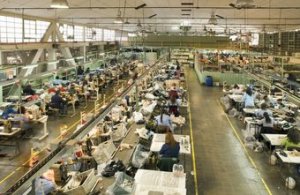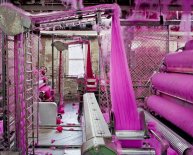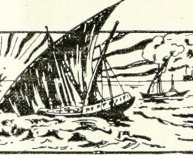
Textile industry machines
 Many types of machines are used in the textile industry.
Many types of machines are used in the textile industry.
Felipe Dupouy/Lifesize/Getty Images
Although the textile industry fabricates various products, cotton remains the most important natural fiber, and the types of machines found in the textile industry are influenced by processes that realize cotton-based fabrics. Textile machines execute functions at various stages of production - notably yarn spinning, weaving, knitting, sewing and dyeing - though not all machines are necessary for each production line. Other machines create special fabric effects, such as embossing, bleaching and mercerizing.
Cotton Gin
Since its invention in 1793 by Eli Whitney of Westboro, Massachusetts, the cotton gin has revolutionized the textile industry by expediting the harvesting and preparation of cotton for clothing and other fabrics. The ginning process involves separation of the cotton fibers from the cotton seeds, as well as removing the dirt, stems and leaves from the raw material. The end product is called the lint, which is further processed to yield clothing or other cotton products. The seeds that are undamaged in the process are collected to be used to grow more cotton. Alternatively, the seeds feed other factories that produce cottonseed oil and meal.
The Loom, for Weaving
The weaving process involves interlacing two directions of thread - the warp and the weft - to make fabric or cloth. The associated machine is called the loom, and it uses a jet of air or water to insert the weft. The loom ensures pattern diversity and faultless fabrics by a flexible and gentle material handling process. Fabrics can be in one plain color with or without a simple pattern, or they can have decorative designs; they are generated from the loom with one of three basic weaves - plain weave, satin weave or twill.
Knitting Machines
Knitting machines are used to make knitted fabrics in a semi or fully automated manner. The knitting machine consists of a needle bed with hundreds of needles as well as a knit carriage - a flat piece made of either metal or plastic. In its operation, the carriage is threaded with yarn and moved across the needle bed, and the needles, resembling tiny latch hooks, catch the yarn and pull it through loops. The row of stitches so formed drops down, and the carriage moves back in the reverse direction to make another row. Commercially available knitting machines include the circular knitting machine and the V-bed knitting machine.
Tufting Machines
Tufting equipment is used in textile mills that produce rugs and carpets. The tufting process uses 800 to 2, 000 needles working together to draw a cluster of soft yarns through a backing material. The backing material keeps the fibers in place. The yarns project from its surface in the form of loops or cut yarns, yielding the familiar texture of rugs and carpets.
















